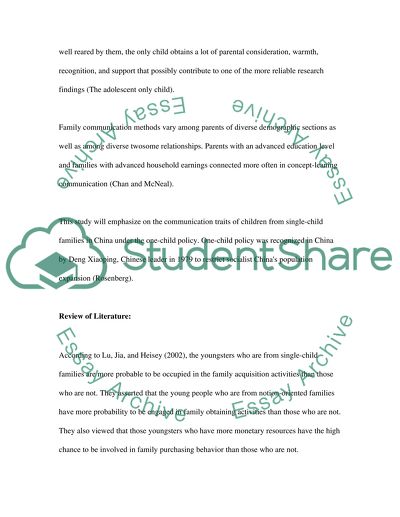Cite this document
(Communication Characteristics of Children from Single-Child Families Research Proposal, n.d.)
Communication Characteristics of Children from Single-Child Families Research Proposal. Retrieved from https://studentshare.org/psychology/1556662-the-communication-characteristics-of-children-from-single-child-families
Communication Characteristics of Children from Single-Child Families Research Proposal. Retrieved from https://studentshare.org/psychology/1556662-the-communication-characteristics-of-children-from-single-child-families
(Communication Characteristics of Children from Single-Child Families Research Proposal)
Communication Characteristics of Children from Single-Child Families Research Proposal. https://studentshare.org/psychology/1556662-the-communication-characteristics-of-children-from-single-child-families.
Communication Characteristics of Children from Single-Child Families Research Proposal. https://studentshare.org/psychology/1556662-the-communication-characteristics-of-children-from-single-child-families.
“Communication Characteristics of Children from Single-Child Families Research Proposal”, n.d. https://studentshare.org/psychology/1556662-the-communication-characteristics-of-children-from-single-child-families.


